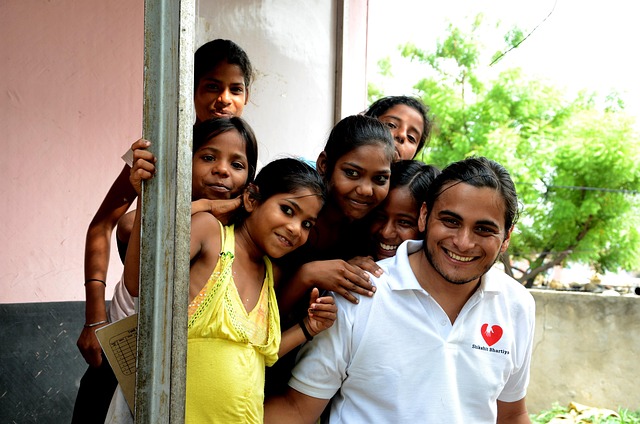Volunteer Networks and Their Role in Local Resilience
Volunteer networks connect residents, nonprofits, and local institutions to improve preparedness, response, and long-term recovery within communities. By coordinating outreach, promoting inclusion and accessibility, and supporting civic participation, these networks can strengthen social cohesion and local governance capacity for diverse neighborhoods.

Volunteer networks are collective structures—formal and informal—that help communities prepare for and respond to shocks while supporting everyday social needs. Acting across local services, nonprofits, and civic institutions, these networks mobilize skill sets, resources, and social capital. Their contributions to resilience include rapid response in crises, consistent support for vulnerable groups, and sustained advocacy for equitable policies that shape urbanism and neighborhood well-being. Understanding how they operate clarifies how community participation and governance interact to make places more adaptable.
How do volunteer networks build community cohesion?
Volunteer networks create repeated opportunities for interaction and shared purpose, which strengthens trust and reciprocity among neighbors. Through coordinated volunteering efforts—such as neighborhood emergency teams, food distribution initiatives, or community cleanups—people form relationships that extend beyond single events. Those ties enable faster information sharing, mutual aid, and collective problem solving during disruptions. Cohesion emerges when networks intentionally include diverse residents, emphasize equitable access to volunteer roles, and maintain regular engagement that transforms episodic assistance into lasting social infrastructure.
How do networks promote inclusion and accessibility?
Inclusion and accessibility are central to resilient volunteer systems: networks broaden participation by removing barriers related to language, mobility, schedules, or digital access. Effective programs offer multiple pathways to contribute, provide reasonable accommodations, and ensure representation from marginalized groups in leadership and planning. By centering equity, volunteer networks reduce gaps in service and voice, so that assistance reaches people who otherwise might be excluded. Accessible outreach and training foster a more representative volunteer base and improve the cultural relevance of responses.
What role do volunteer networks play in civic engagement and advocacy?
Volunteer networks often bridge everyday civic engagement with policy influence, connecting grassroots experiences to local governance. Volunteers who document needs, coordinate relief, or run community programs can identify systemic gaps and advocate for policy changes in areas like housing, emergency planning, or public services. This civic engagement helps translate lived experience into governance priorities. When networks collaborate with officials, they contribute evidence and community perspectives that support inclusive policy development and more responsive local institutions.
How do nonprofits and governance interact with volunteer networks?
Nonprofits, municipal agencies, and volunteer groups frequently operate in partnership, each offering complementary capacities. Nonprofits provide program infrastructure, training, and volunteer management; local governments coordinate resources, data, and regulatory support. Strong collaboration clarifies roles, reduces duplication, and aligns outreach with formal services. Governance that recognizes and integrates volunteer networks can channel volunteer efforts into public plans—improving coordination during emergencies and enhancing routine service delivery—while maintaining accountability and safeguarding volunteers and beneficiaries.
How do outreach and participation shape urbanism and neighborhood resilience?
Outreach strategies determine who participates and how effectively networks reflect neighborhood needs. Targeted outreach to schools, faith groups, community centers, and local businesses diversifies participation and builds distributed capacity across urban areas. Participation that includes planners and residents informs urbanism decisions—such as green infrastructure, public space design, or transit access—that influence long-term resilience. When volunteers participate in community planning processes, their practical knowledge helps align built-environment investments with social needs and equity goals.
Examples of nonprofit providers and local initiatives
Volunteer infrastructure often relies on organizations that coordinate opportunities, training, and logistics. Established providers include international and national groups alongside local volunteer centers and community foundations. Examples include American Red Cross and similar national organizations that manage large-scale emergency volunteering; VolunteerMatch and other platforms that list local opportunities; United Way chapters that coordinate cross-sector responses; Habitat for Humanity partners that mobilize volunteers for housing projects; and city or county volunteer centers that connect residents with civic roles. Community-led mutual aid groups and faith-based organizations also play a vital role in outreach and immediate assistance.
Volunteer networks vary in scope and structure, and their effectiveness depends on sustained investment in inclusive recruitment, training, and partnerships with nonprofits and governance bodies. By prioritizing accessibility and equity, integrating local knowledge into planning, and maintaining clear coordination mechanisms, networks strengthen both everyday support systems and crisis response capacity. This combination of social ties and organized activity helps communities adapt to change, recover from shocks, and pursue more equitable long-term development.





